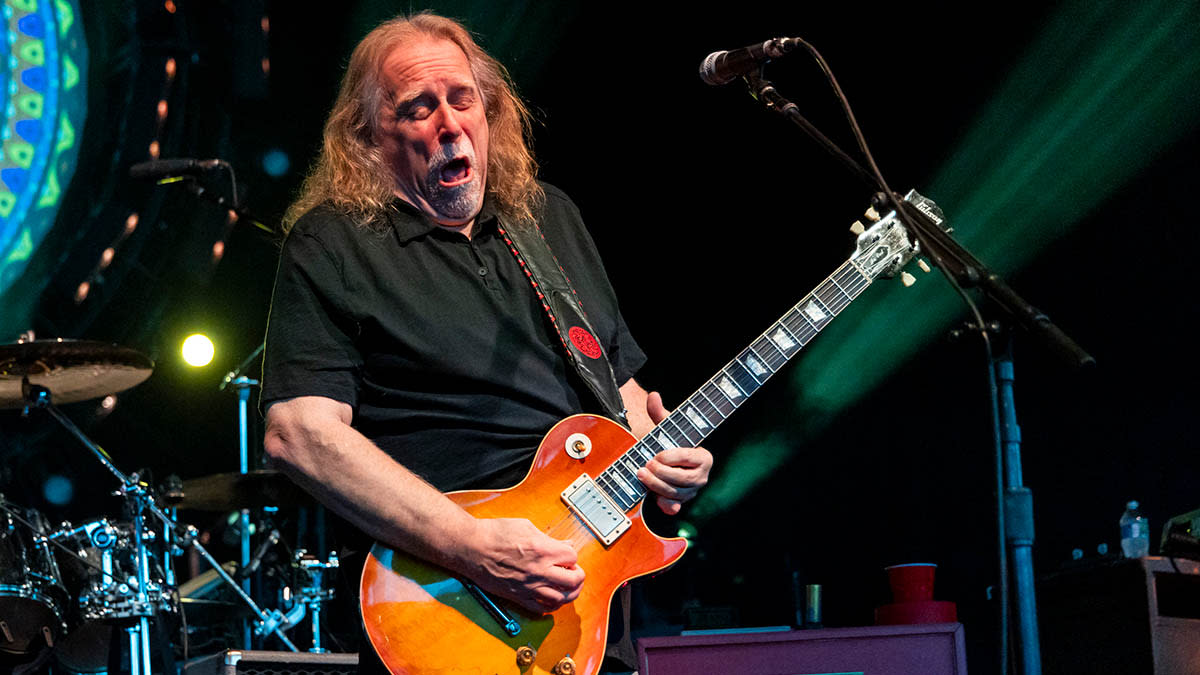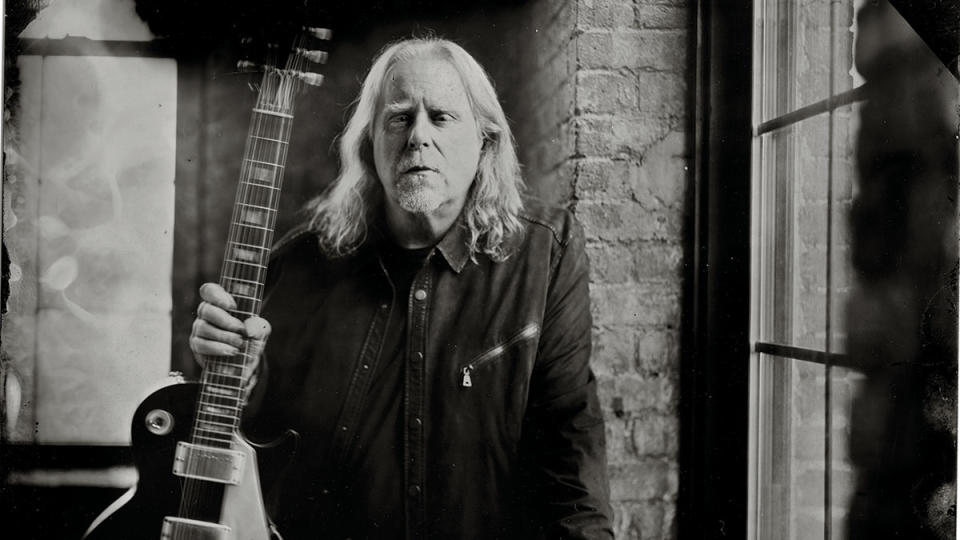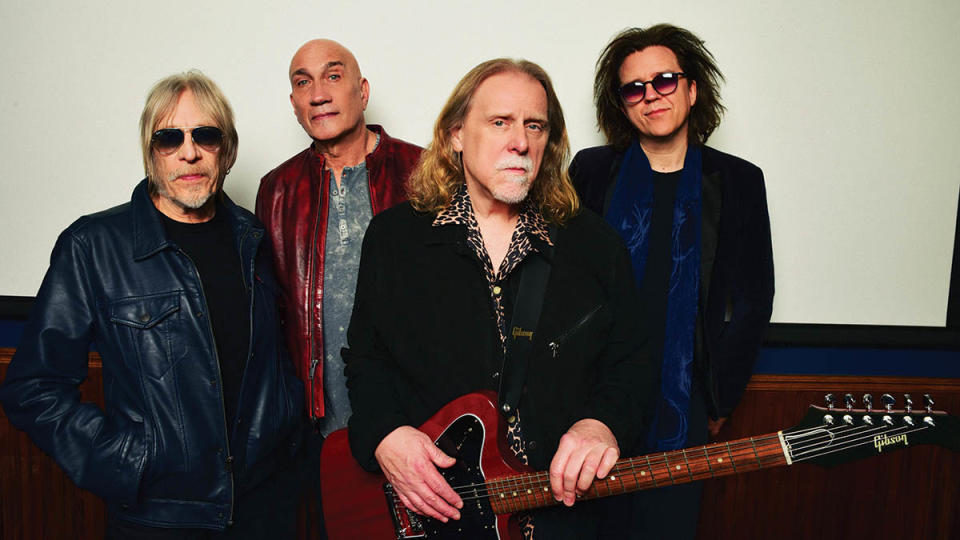“We’ll play up to 200 songs over the course of a tour… it would drive me crazy to play the same songs every night”: Warren Haynes on what drives Gov’t Mule – and why he’s focusing on writing guitar epics

Back in late 2021, when Gov’t Mule released the Grammy-nominated Heavy Load Blues, their first proper all-blues album, they actually had another completely different album already gassed up, greased up and ready to hit the streets. Peace… Like a River, the previously under-wraps album, was recorded at the same time as Heavy Load Blues, with the band working on tracks for that album by day, then switching gear to work on the bluesier disc at night.
As Warren Haynes recounts, the band took a novel approach to the already unusual concept of recording two albums at once: “We set up two sets of gear in two studios, keeping everything live for the blues album, which was done in a small studio, adjacent to the main studio where Peace was laid down. Absolutely no gear was shared between the two projects – guitars, amps, you name it – everything was kept separate to maintain the two distinct sounds and feels.”
The resulting album is an ambitious, stylistically diverse record that covers many bases, with some surprising guest vocals by Billy Gibbons and Billy Bob Thornton thrown into the mix. Given that it has been sitting in the can for quite a while, Haynes is still happy with the final result and wouldn’t change a thing, even with the benefit of hindsight.
I’m probably happier with this record than anything we’ve ever done... I felt really good about the songs, having had so much time to work on them and refine things
“I’m very happy with it,” he says. “In fact, I’m probably happier with this record than anything we’ve ever done. I was really pleased with the material I’d written during lockdown; that was one of the few good things that came out of that whole situation – I had so much time to write.
“I felt really good about the songs, having had so much time to work on them and refine things. I think everybody, regardless of whether they were musicians or whatever, was faced with the same dilemma: how to make the best of a bad situation.”
Haynes is looking forward to taking the album out on the road with Gov’t Mule, and also plans to do a few of their legendary Dark Side of the Mule shows for the final time in 2023.
“Yeah, we’ll spend a couple of days running down the set, more from a show production point of view as we’ll have a few extra musicians with us on stage,” he says. “We’ll kick off with a Mule set and then we’ll gradually morph into the Pink Floyd stuff. It should be a really interesting show.”
You’ve said you had to change your usual method of working for the new album, as you’d normally try out songs live before recording. Was the change in modus operandi a positive thing?
“It meant a lot more rehearsal on the front end. We spent about eight days in the studio just rehearsing and prepping the songs before we ever started rolling tape. It was cool, although I wouldn’t want to do every record that way.
“It felt so good to be back together in the studio, working on new material, that we just kind of took a slower pace in the beginning to get back up to speed, but it really felt great to be back together in that environment. Everybody was just so happy to be back in a creative mode, and we spent a lot more time in the studio than we normally would.”
With you having recorded it so long ago, have you been building up a bunch of new songs for the next album?
“I tend to go in phases; it’s a bit like a sine wave. [Laughs] There can be extended periods where I don’t write very much – it’s not always in sync with the album cycle, but I guess, in most cases it kinda works out that way.
“There were a lot of songs that were written for this album that we didn’t record, so I look forward to dusting them off in the future, and I’ve also just recently started to write a lot again, but I did go several months without writing anything once we finished recording this album.”
Most of your new songs tend to stretch out, so that the album is relatively long by modern standards. Do you prefer to have the luxury of space to be able to stretch out, musically?
“We’ve always gravitated to longer songs and stretching out, especially live, where they tend to grow even more. Improvisation is a huge part of what we do. But also, from an arrangement standpoint, I think that is something that’s missing from most of today’s music – songs with detailed arrangements and a lot of moving parts.
“I don’t know if you could get away with that in the mainstream world these days. We’re trying to bring it back in our own way because, I suppose, it’s a big part of what we love. A lot of the songs on this album have seven or eight different sections, as opposed to the normal two or three these days.”
As you said, there are a lot of parts to most of the songs. Did you know how the songs would work out ahead of time, or did the arrangements evolve out of working with the band?
“Probably half and half. Sometimes I envision the songs having a lot of moving parts from the very beginning, but sometimes it just feels natural as we’re starting to work the songs up as a band. I think it’s a product of the things that influenced me, songs like [Kansas’] Carry On Wayward Son or even [Queen’s] Bohemian Rhapsody.
“Those were real complex songs that you’d hear on the radio all the time. It was a challenge for the listener, in a good way, and I think people were up for that challenge. As long as you maintain the listener’s interest, it’s a good thing, but in today’s world, where people’s attention spans are really short, why not challenge that a little bit?”

We’re in an age where everything is constantly being dumbed down and reduced to the minimum.
“Yeah, and the alternative to doing what we’re doing is for songs to get shorter and shorter and simpler and simpler, to where eventually everything is just a soundbite, and I really hate that idea.”
With the addition of the five songs on the bonus EP, Time of the Signs, there was enough material for a whole double album. Was that ever a possibility?
“We always wind up releasing everything we finish. Our fans really like the deluxe versions of whatever we put out; we actually sell more of the deluxe versions than the standard versions. So in that way it kind of is actually a double album, with a shorter version available for people who don’t want all the excess.
“Our fans love as much as they can get, I think, and I’m that kind of music fan. I’d be the same way too, buying someone else’s record – if it was someone I really liked. I’d want as much of their music as possible.”
It’s a double album by stealth.
“Yeah. [Laughs] Even the standard CD runs at about 80 minutes.”
It’s interesting that, although there are a lot of guitar parts, layers and textures, there’s always space for the guitar to breathe. Is that something you’re consciously striving for?
“We always record live, so the interplay among the band is the most important factor; the conversational aspect of the way we play is what we’re trying to capture. That interplay is more important for me than for me to try to take up a bunch of space or even play some acrobatic solo. I much prefer the call and response that takes place naturally when we play together.”
I always end up going with the solos that I do live in the take, because it’s more inspired, I think, to play according to what I’m hearing the other guys play
You always seem to have the song as the primary focus, so that solos serve the song and can be fairly minimal.
“Every time we go into the studio I tell myself I want to do more overdubbing and experimenting with different solos and stuff, but I always end up going with the solos that I do live in the take, because it’s more inspired, I think, to play according to what I’m hearing the other guys play.
“It’s much more gratifying to me than playing to an existing track. If it feels good, we wind up just keeping it, and through the years I’ve figured out that that’s the most representative way to capture what it is we do in that live moment.”

Made My Peace is redolent of the Beatles, isn’t it?
“Absolutely, yeah. It has more of a Beatles and John Lennon influence than anything we’ve ever recorded, and I even sensed that being the case while I was writing it. I double-tracked the vocal in the same way Lennon did, which was a deliberate nod to the influence, but the orchestration also wears that influence, and even the slide solo pays a subtle homage to George Harrison.
“The arrangement is a little ambitious in the way it goes into all those different sections; most of those sections are definitely very Beatles-influenced. We wouldn’t normally go that far down that road.”
There’s quite a funk feel to Peace I Need and Head Full of Thunder.
“I feel like we’re always mixing influences and genres. These are very much rock songs with a lot of moving parts that each carry their own influences. The main riff for Peace was written just before rehearsal, but I didn’t know what everybody else was going to play. When we worked it up everybody brought things to it that took it to a whole different place.”
What were the main guitars and amps you used for the album?
“I used three different non-reverse Firebirds that have three P-90s in them, and a couple of non-reverse Firebirds with Burstbuckers. The guitar I used most, though, was my signature Les Paul. I also used a ’59 Les Paul on a couple of songs. I have a Custom Shop blonde ES-335 that saw a lot of action on this record. I also recently got a new Custom Shop 335 with P-90s that made its way onto a couple of songs.
“There was some Epiphone Casino and an Epiphone 12-string here and there. I also played a Flying V on Blue Blue Wind on the bonus EP, and a D’Angelico Excel on The River Only Flows One Way for the jazzy stuff. For acoustics, I used a 1970 Gibson Hummingbird, a J-200 and a Gibson 12-string that belonged to [original Gov’t Mule bassist] Allen Woody.
“The amps were mostly Homestead or the Diaz blended in with an Alessandro small recording amp. Soldanos, Marshalls and a Vox AC30 also appeared here and there, but not as much as on previous albums.”
Billy Bob Thornton adds vocals to The River Only Flows One Way. How does something like that work? Do you have a specific sound and feel you’re looking for, or do you just ask him to go with what he feels and see how it turns out?
“When I wrote that song, I knew I wanted the verses to be a kind of spoken-word, demented beat poetry, and I knew I didn’t want it to be my voice there. When I thought about Billy Bob, it seemed like a perfect fit.”
And there’s quite a Doors vibe on After the Storm.
“Yeah, there is definitely a strong Doors feel on that one; in fact, I used a Robby Krieger Les Paul for the guitar solo. It seemed to make sense. This was the last song written for the record – it was actually written in the studio.
“Danny [Louis, keyboards/guitar] and Matt [Abts, drums] were in the cutting room jamming on what turned out to be the basic track for this song; I was listening in the control room, and I just started writing lyrics down that were inspired by what I was hearing.
“When they took a break I said, ‘Let’s turn this into a song,’ and the whole thing came together really quickly. The Doors feel grew organically from what they came up with in the first place.”
You take a lot of guitars into the studio. How do you decide what to use for a given track?
“The Firebirds are normally tuned down a half-step, so if I’m in Eb or Ab, that’ll normally be a Firebird to get a twangier sound. The song usually cries out for a certain type of sound; sometimes we’ll try it one way with a guitar, and if we don’t like it, we’ll experiment a bit, but usually the one that cries out to be played is the one that winds up on the record.”
What keeps everything fresh for you after so long on the road?
“We have such a large catalog of music that we can draw from at any time. The fact that we have such a big setlist – so we can do different songs every night – really helps to keep me sane! We’ll play up to 200 songs over the course of a tour, and that keeps all of us from going nuts. It would drive me crazy to play the same songs every night.”
Peace... Like a River is out now Fantasy.

